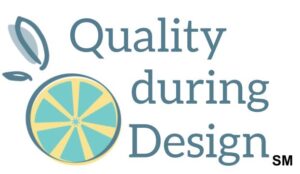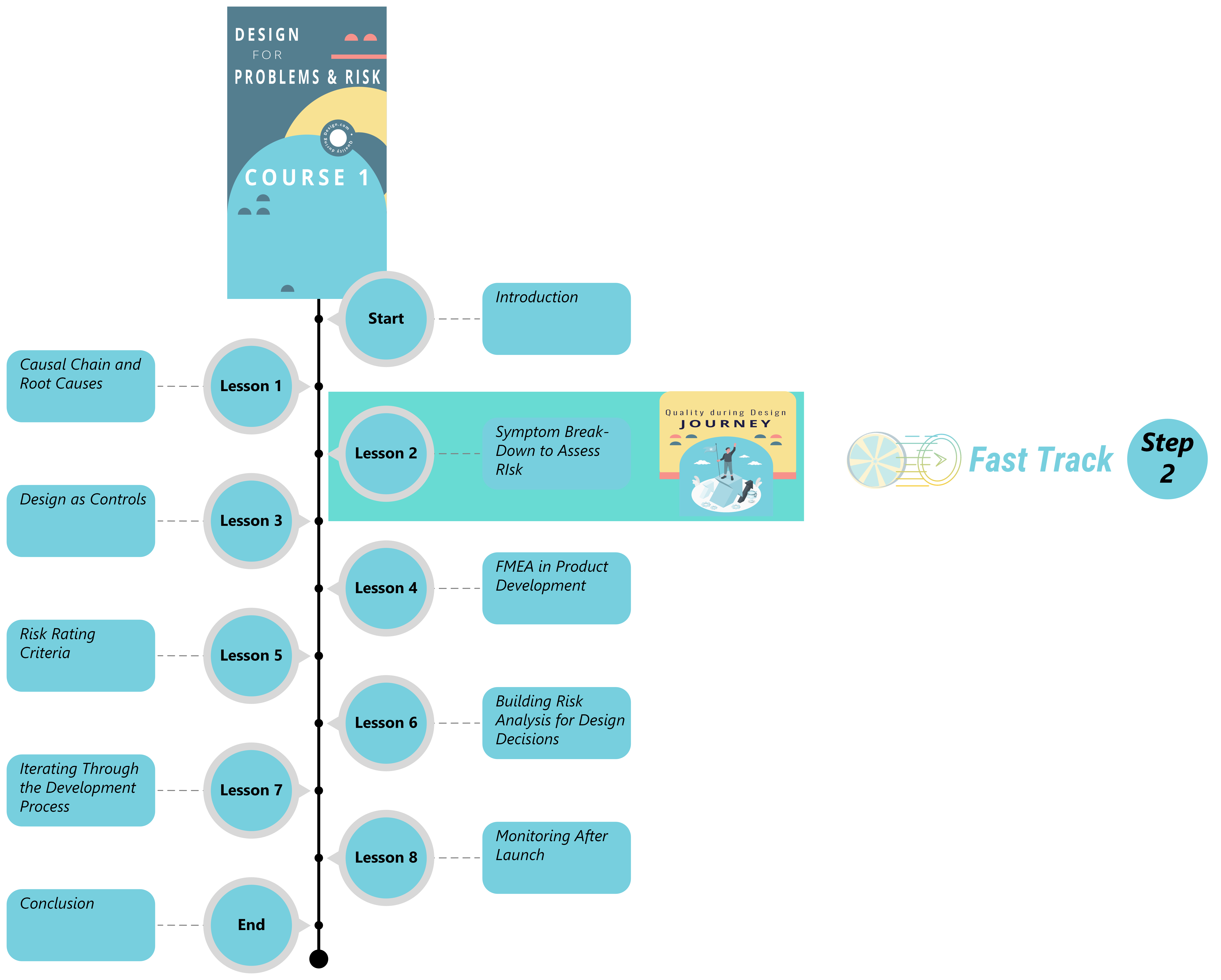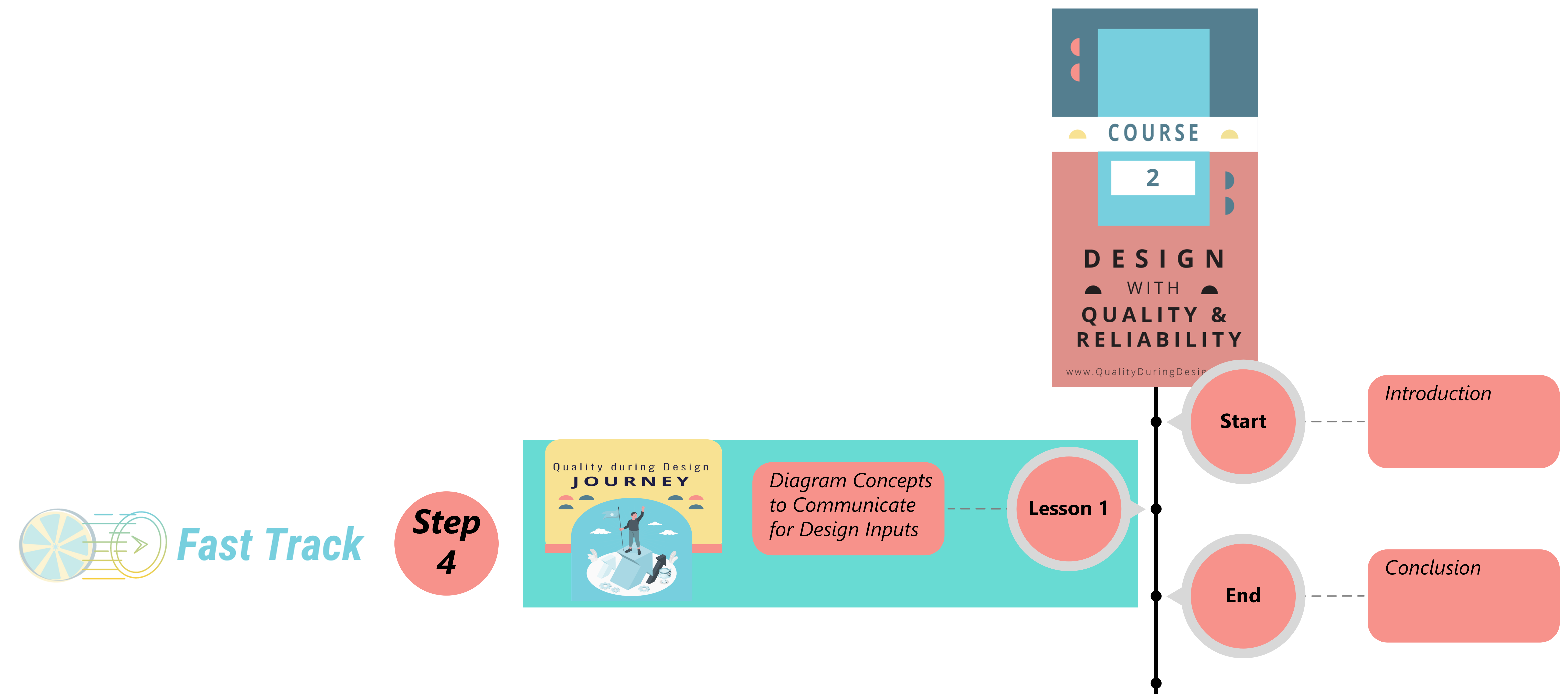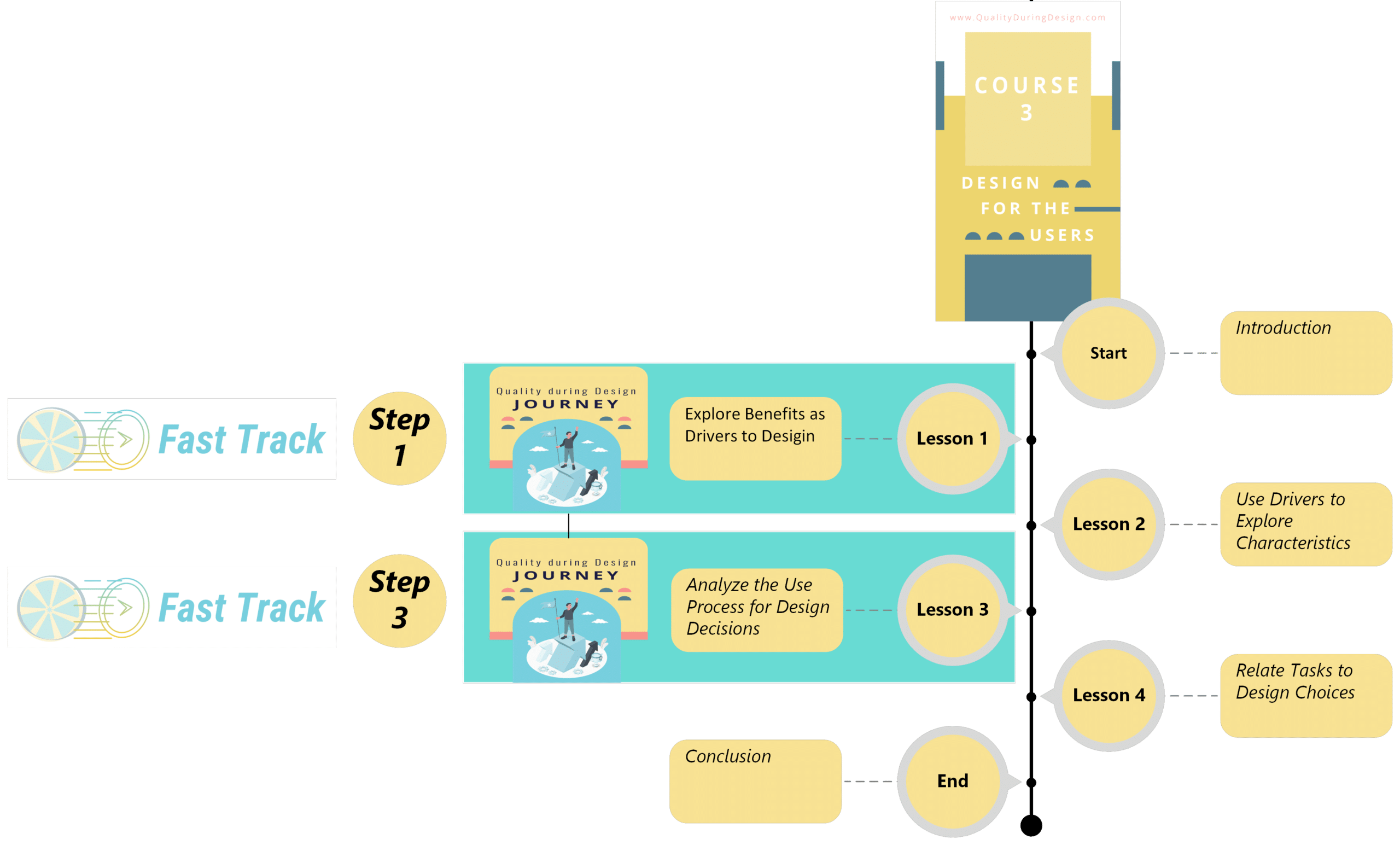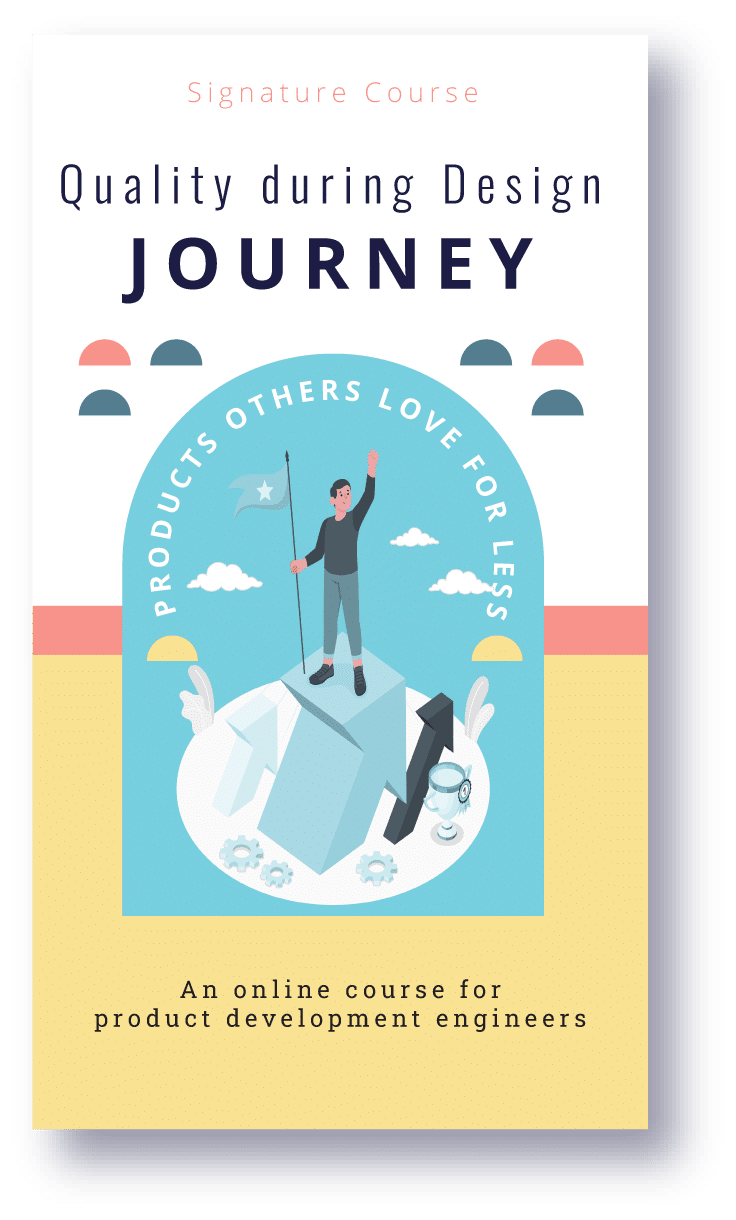
Welcome to the Quality during Design Journey, Dianna!
This ABOUT page shows you what we'll be covering. It also shows you how to navigate course material and where to access information related to the course. Access everything about the Quality during Design Journey from this page.
If you want to jump in and you haven't yet done this lesson, I recommend you start with the Lesson: Engineering Products from the Concept Space (link in the sidebar to the left).
How the Quality during Design Journey is Organized
Introduction Lesson: Engineering Products within a Concept Space View this lesson to understand the concept space and how these lessons are organized within it.
Fast Track Steps Start with these 4 lessons to get a fast start to working with your cross-functional team for design inputs. These 4 steps are lessons I picked specifically to fast track your success in getting design inputs from the concept space.
QDD Journey Courses This QDD Journey are 3 courses that make up additional lessons. The other lessons are next steps to the Fast Track. Iterate what you've learned about the concept space to help you and your team with the design throughout the development process. Courses are:
- Design for Problems and Risk
- Design with Quality and Reliability
- Design for the Users.
Step-by-step Within the Fast Track and the courses, the lessons are designed to be consumed step-by-step, following the step and lesson number. Within the courses, each lesson builds upon the concepts from the last.
Media All lessons have a video file with corresponding transcript and audio file that presents the same material. This gives you a choice of how you want to learn. Most lessons have bonuses: downloadable worksheets, reminder notes, extra videos, and links to more materials. These bonuses are at the bottom of the lesson page. Extra bonuses may be linked in the emails corresponding to this course.
Release Time All courses and lessons are available upon access. Look for messages with associated topics and posts in the QDD Journey Discussion Group and the QDD Notices - Bulletin Board.
Available/Completed/Unavailable Lessons If the icon is in color, you have access to that lesson today. If the icon is in color with a checkmark, you've completed all of the objectives in that lesson. If the icon is gray, then you do not yet have access to that lesson.
Comments Try the QDD Journey Discussion Group first. Or you may email [email protected].
QDD Journey Features
QDD Journey Discussion Group
The QDD Journey Discussion Group is the place to ask questions and get answers about all topics related to the Journey.
Manage your profile, contact the instructors, and start a conversation with other students. This is a benefit of being on the Quality during Design Journey!
Quality during Design Notices
This is the bulletin board of the Journey. Check here for posts about updates and other notices.
Quality during Design Customer Account Support
Use this Customer Account Support for questions about technical things or access to lessons.
If you have a question about a lesson topic, please use the QDD Discussion Group.
QDD Journey Lessons
Lesson: "Engineering Products from a Concept Space"
View this lesson as an introduction to using the concept space to develop design inputs with just a conceptual design.
Lesson Series: "Fast Track"
Start taking these 4 steps with lessons to get a fast start to working with your cross-functional team for design inputs. These are lessons I picked specifically to fast track your success in getting design inputs from the concept space.
Quality during Design Journey Courses
You get instant access to the Quality during Design Journey. Take what you learned in the Fast Track lessons to the next step. Iterate for more teamwork, information, and prioritization of design decisions throughout product development.
You don't need to complete them in order. For example, you don't need to do Course 1 before you do Course 2. Choose the topic that's most relevant to what you're working on now.
All courses give examples. The same scenario is used throughout to show the different aspects of design that these different methods highlight.
